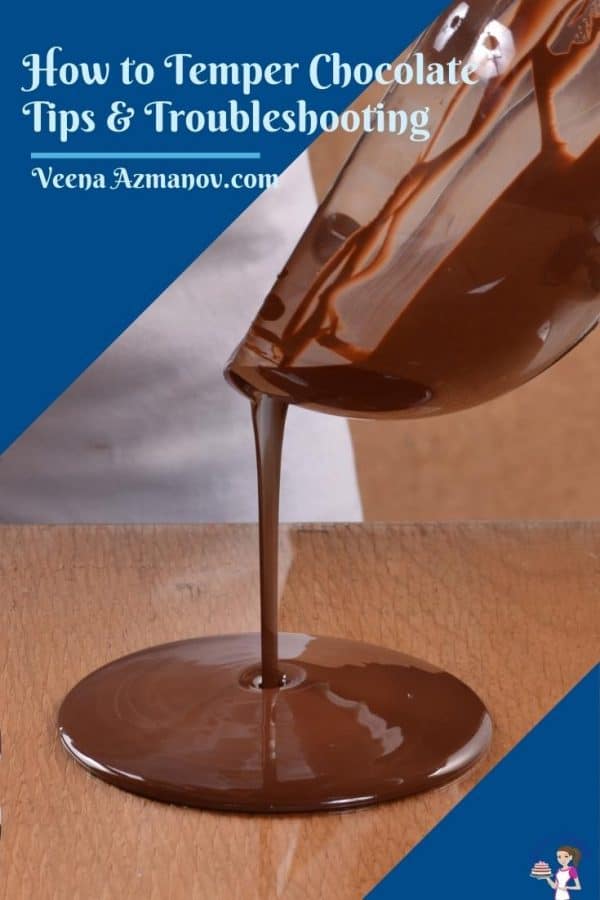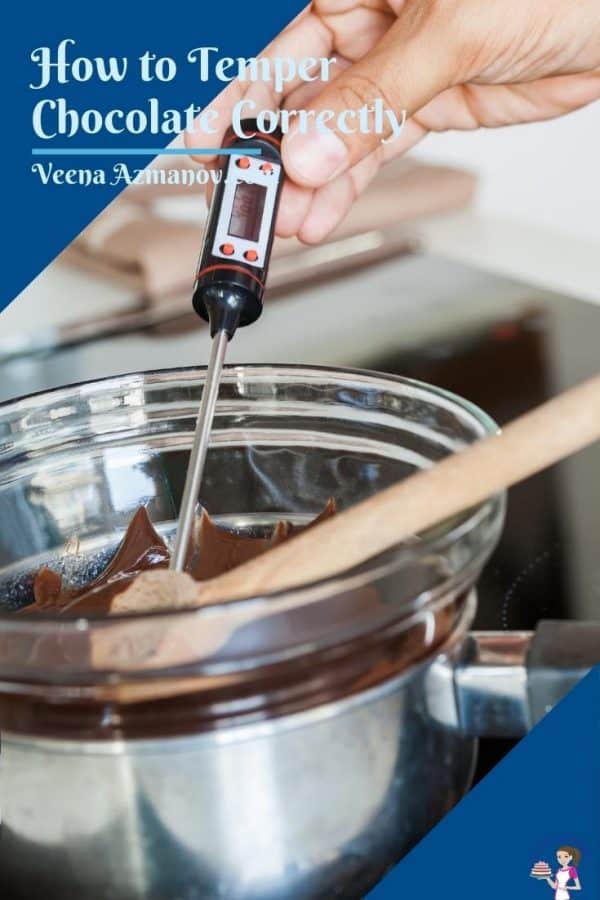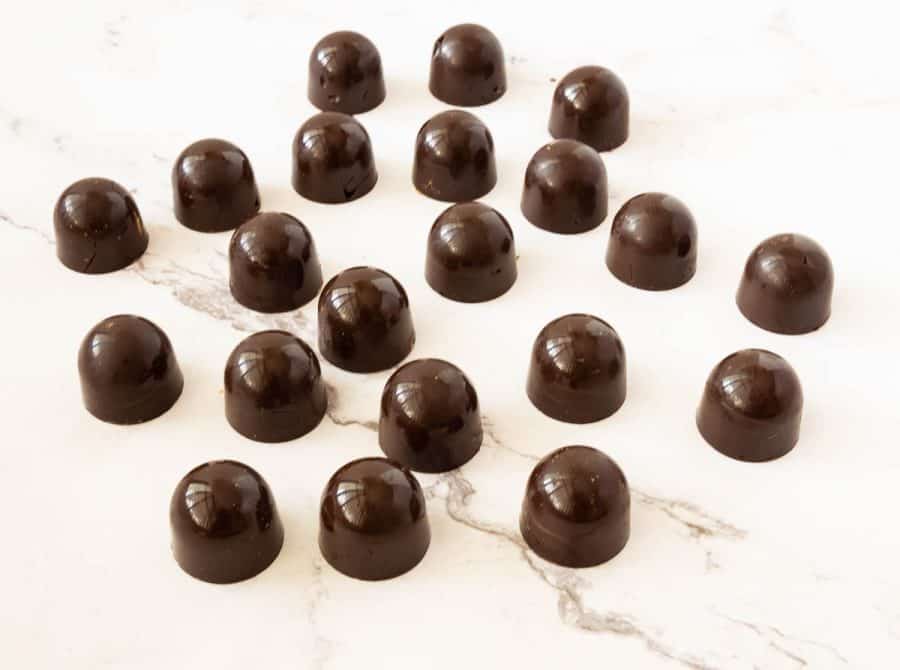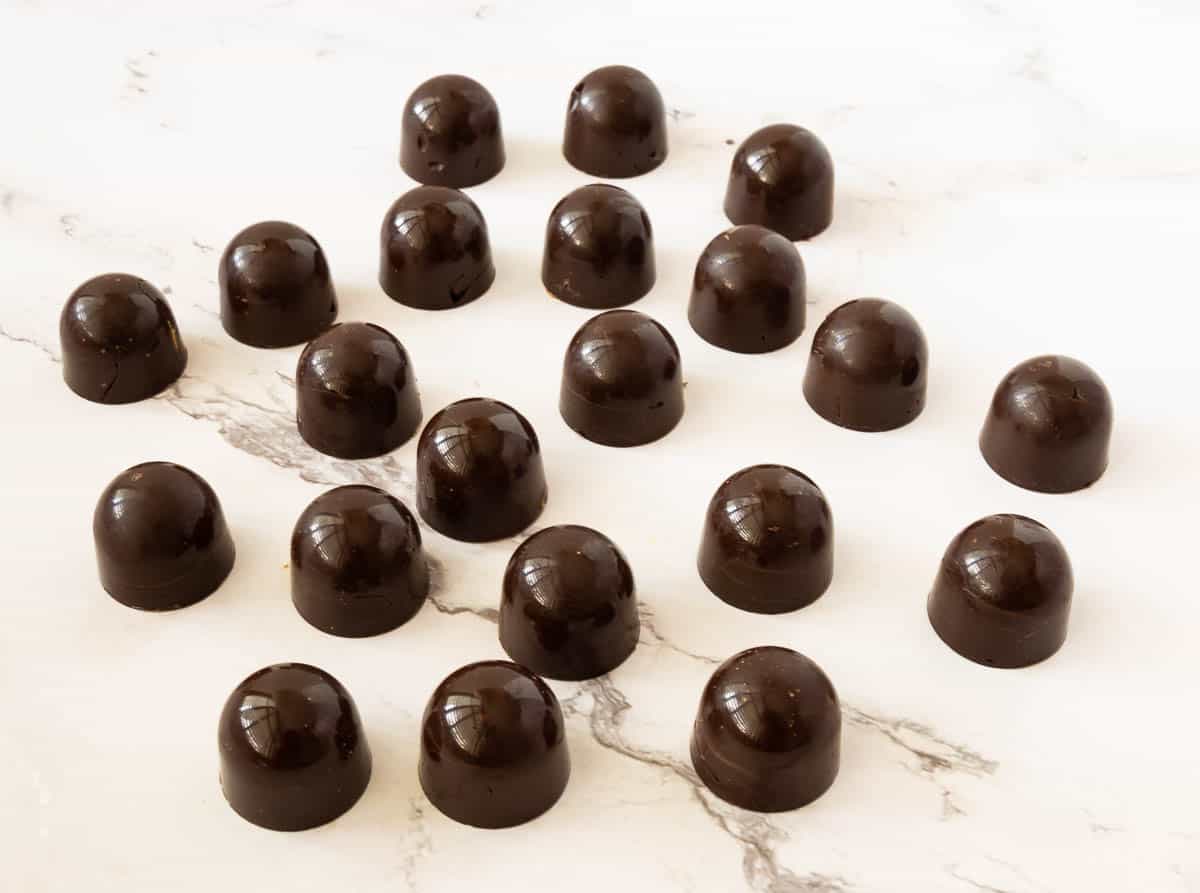For a long long time, the thought of tempering chocolate was intimidating to me. In fact, the first few times I didn’t do it right. I had a few chocolate blooms, melting, no snap, nothing!! And, as they say, practice makes perfect. So I decided to learn more about chocolate. I must admit it took me more than a few trials and errors to get it right. But, once you learn to temper chocolate, you will be able to make all those wonderful homemade candies such as truffles, bonbons, and barks. You will be proud of how wonderfully smooth, shiny, and hard the texture of your chocolate is even at room temperature.
Tips for tempering chocolate
First, decide whether you need melted or tempered chocolate Choose the right tempering technique that works best for your Next, choose the right tempering method that works best for you. Understanding chocolate is important. So know the difference between white, milk, dark, or ruby chocolate Get the right tempering temperature for the right chocolate Make sure to never overheat the chocolate as it can burn easily. When adding more chocolate make sure the chocolate is chopped finely or in smaller pieces so it melts easily bringing the temperature of the chocolate down. Use the thermometer often but clean the tip after each use otherwise the chocolate will set on the tip and not give you the correct reading.
When do you use tempered chocolate?
If you plan to dip chocolate, mold chocolate, make bonbons, you want to temper your chocolate so it will be smooth, shiny, and stay hard at room temperature. However, if you are baking with melted chocolate such as your coffee or layer cakes or adding it to your desserts such as a mousse or tart you do not need to temper it. Just melt it and use it in the recipe as directed.
To temper, we melt the chocolate at a high temperature (110°- 120°F) where the beta crystals in the cocoa butter breaks down. When the chocolate melts completely, we cool again to about 82°F. At this time the beta crystals start to form again so the chocolate can re-solidify. Then, we raise the chocolate temperature to 90°F where it is at the right working consistency.
Properly tempered chocolate is shiny and sets at room temperature. It has a snap when you break or bite into it. You can temper any chocolate – white, milk, dark as well as ruby. However, the right tempering and working temperatures for these different chocolates will be different. And, it is very important to keep these temperatures in mind.
Semi-sweet chocolate should be at 88° to 90°F (or 31°to 32°C) Milk chocolate should be at 84° to 86°F (or 28° to 30°C) White chocolate should be at 82°to 84°F (or 27° to 28°C) Rudy chocolate should be at 83°to 84°F (or 28° to 29°C)
Seeding You melt 3/4 of the chocolate (110°F or 43°C) – hot chocolate. Then, you add to it the other 1/4 (unmelted chocolate). The unmelted chocolate brings down the temperature of the melted chocolate, which starts to temper it (82°F or 27°C). Then, you cool it further to a working temperature (90°F or 32°C). You can do seeding in the microwave or the double boiler. Tabling You melt all the chocolate (110°F or 43°C). Next, you pour 2/3 of it onto a cold marble surface and use a spatula or bench scraper to work it until it is significantly cool (82°F or 27°C). Then, you pour it back into the bowl with the melted chocolate and cool it to the right working temperature (90 F or 32°C).
1. Microwave
Use a microwave-safe bowl, heat-proof spatula or spoon, and a thermometer.Pro tip – I like to use a glass bowl but plastic or silicone are often preferable because they retain heat. Chop the chocolate into small, similar size pieces. Place 2/3 of the chocolate in the bowl and into the microwave. Start at 30 seconds on high. Then, take it out of the microwave and stir it with a spatula or spoon.Pro tip – The chocolate will seem as if it is not melted but you still want to stir it. Next, put it back into the microwave and give it another 20 seconds. Remove and stir again. And if necessary, put it back into the microwave for 10 seconds at a time until it melts but does not go over 110°F/43°C (max 115°F/46°C).Pro tip – Make sure you stir well, the chocolate may look like it is not fully melted but the heat in the chocolate is often enough to melt the remaining chocolate. Now, add the remaining unmelted chocolate to the bowl, a little at a time, stirring continuously. Stir making sure that everything is melted before adding more.Pro tip – The chocolate will thicken and become shiny and smooth as it cools. Continue to stir until the temperature of the chocolate comes down to 90°F/32°C for dark chocolate, 86°F/30°C for milk chocolate, and 84°F/28°C for white chocolate.Pro tip – Reaching the temperature is important. Depending on your weather, you may not need all the remaining unmelted chocolate. Your chocolate should now be in temper.Pro tip – You can test your tempering by spreading a little chocolate on parchment paper. It should set within 3 minutes at room temperature. It should be shiny and without any streaks.
The simplest way to remember is when chocolate is on its own rather than an ingredient in a recipe most often the answer is tempered chocolate. Such as in these bonbons below.
Marzipan truffles Pecan marzipan truffles Coconut chocolate truffles Coconut balls
Frequently asked questions
Did you LIKE this recipe? Save it for later. You can find my recipes on Pinterest. Follow me on Facebook, Twitter, and Instagram.Subscribe, and I’ll send you new recipes right to your inbox. Thank you for sharing - Save for later























